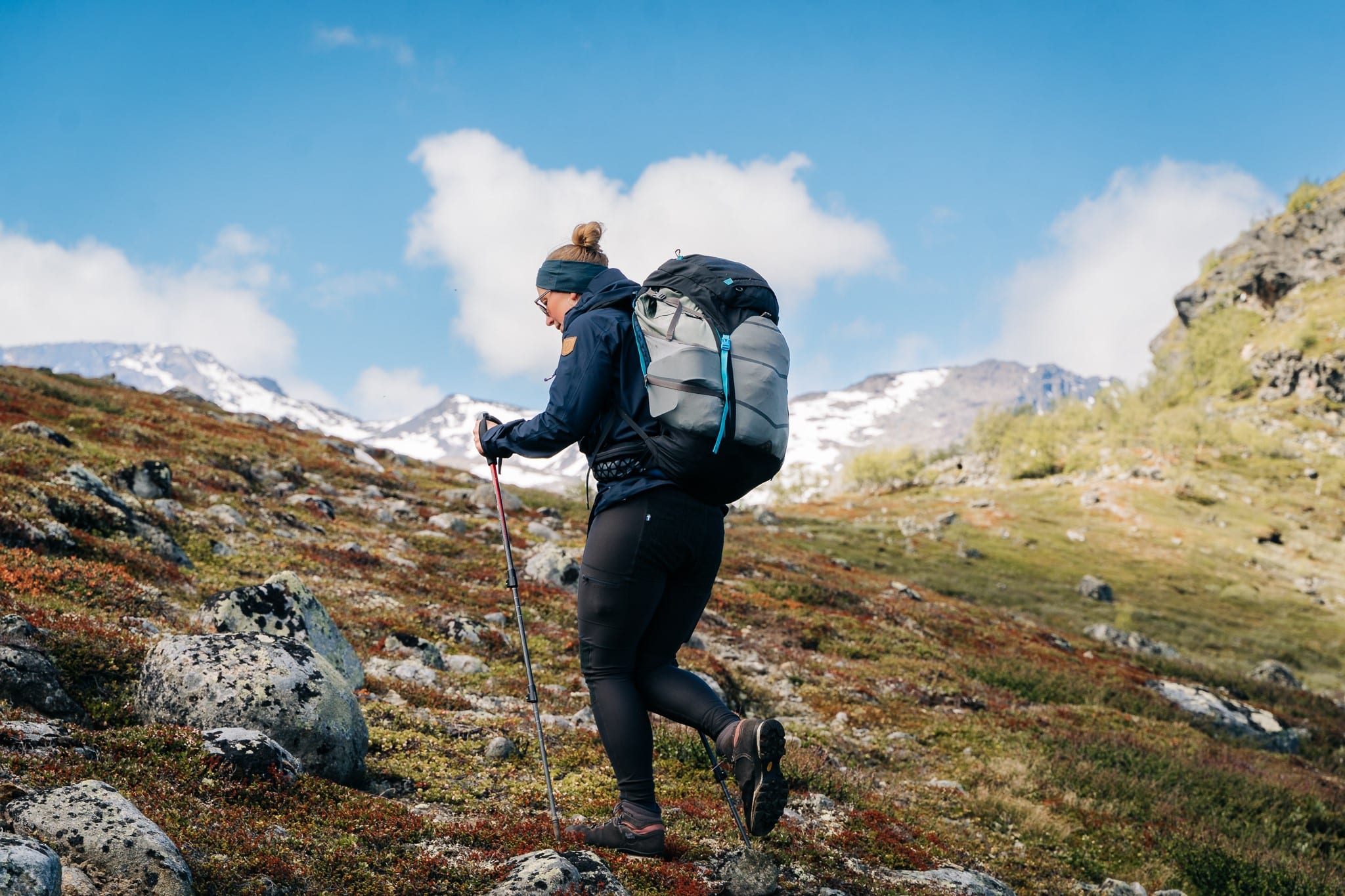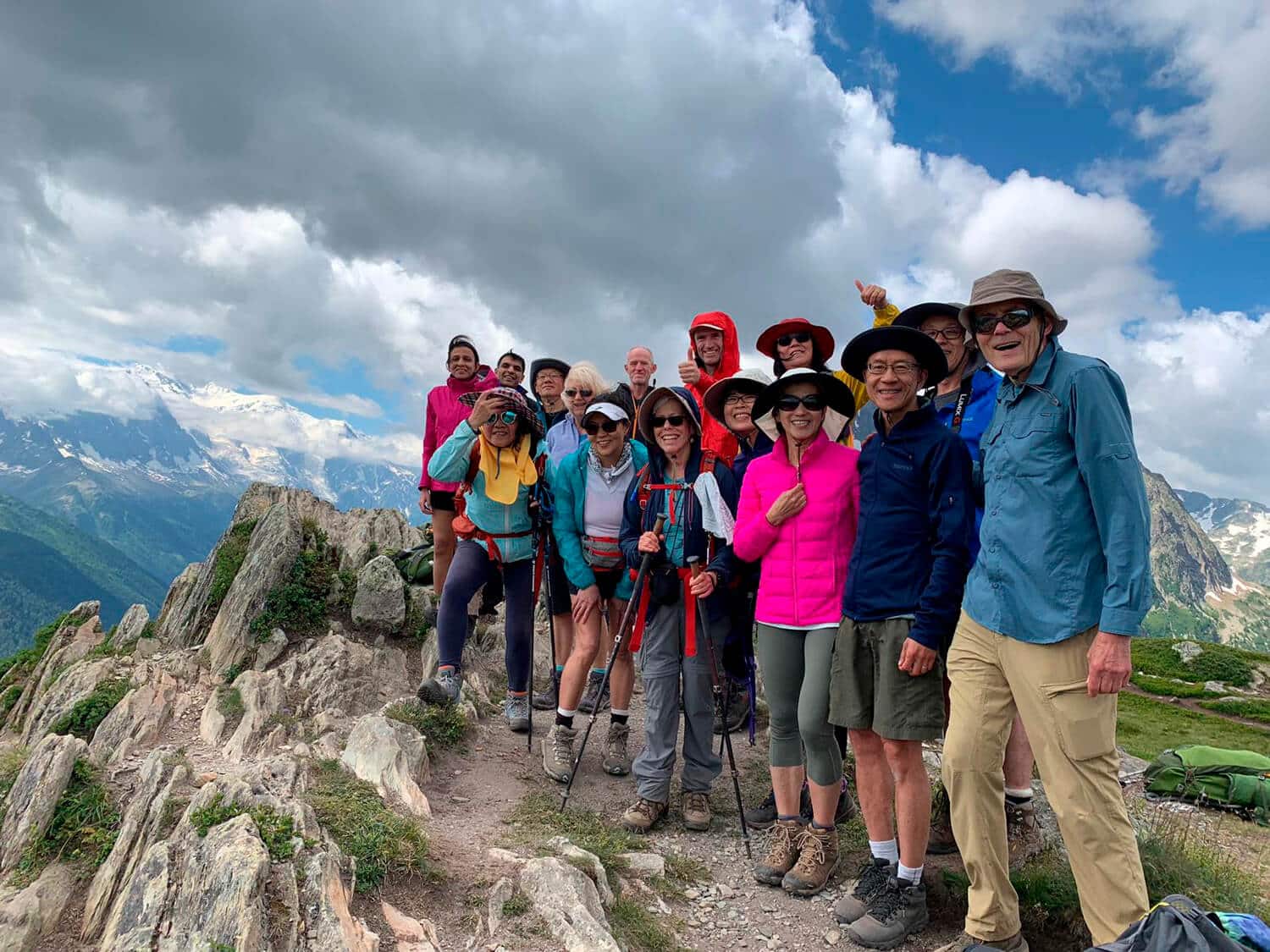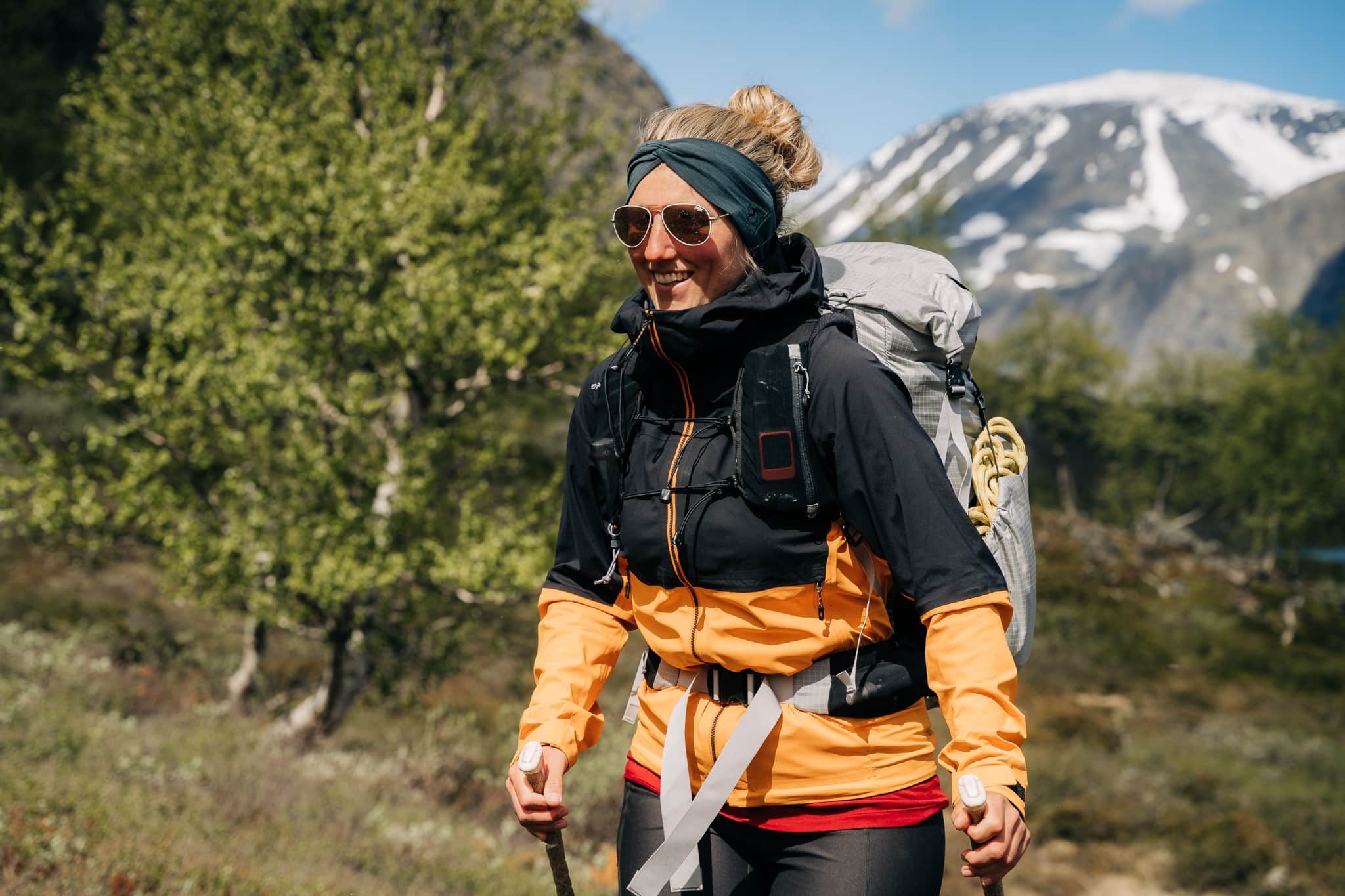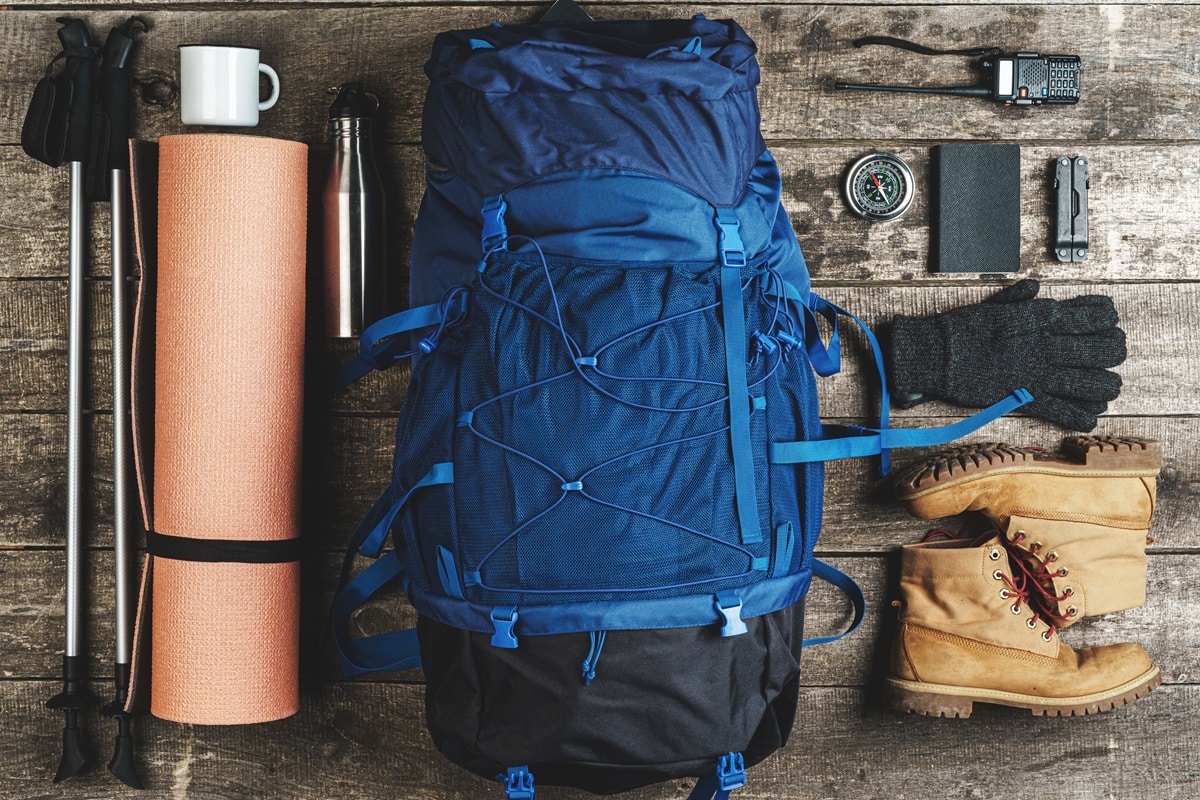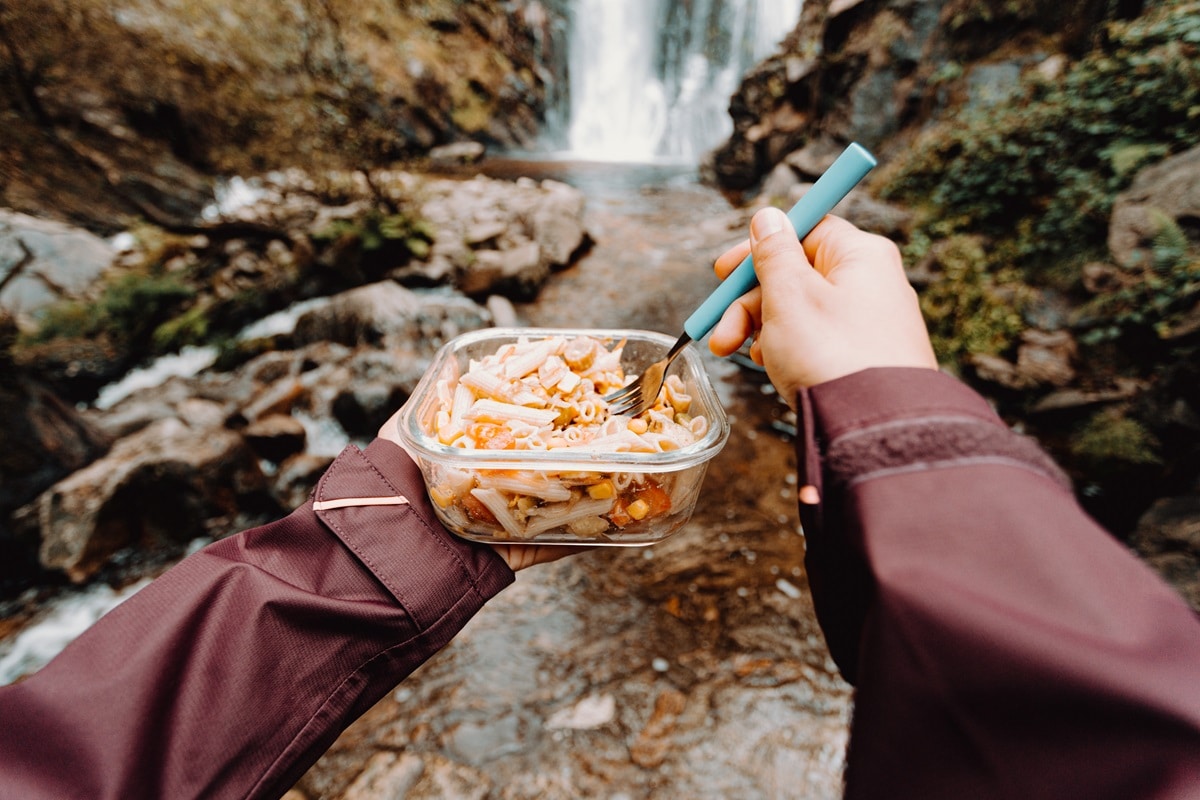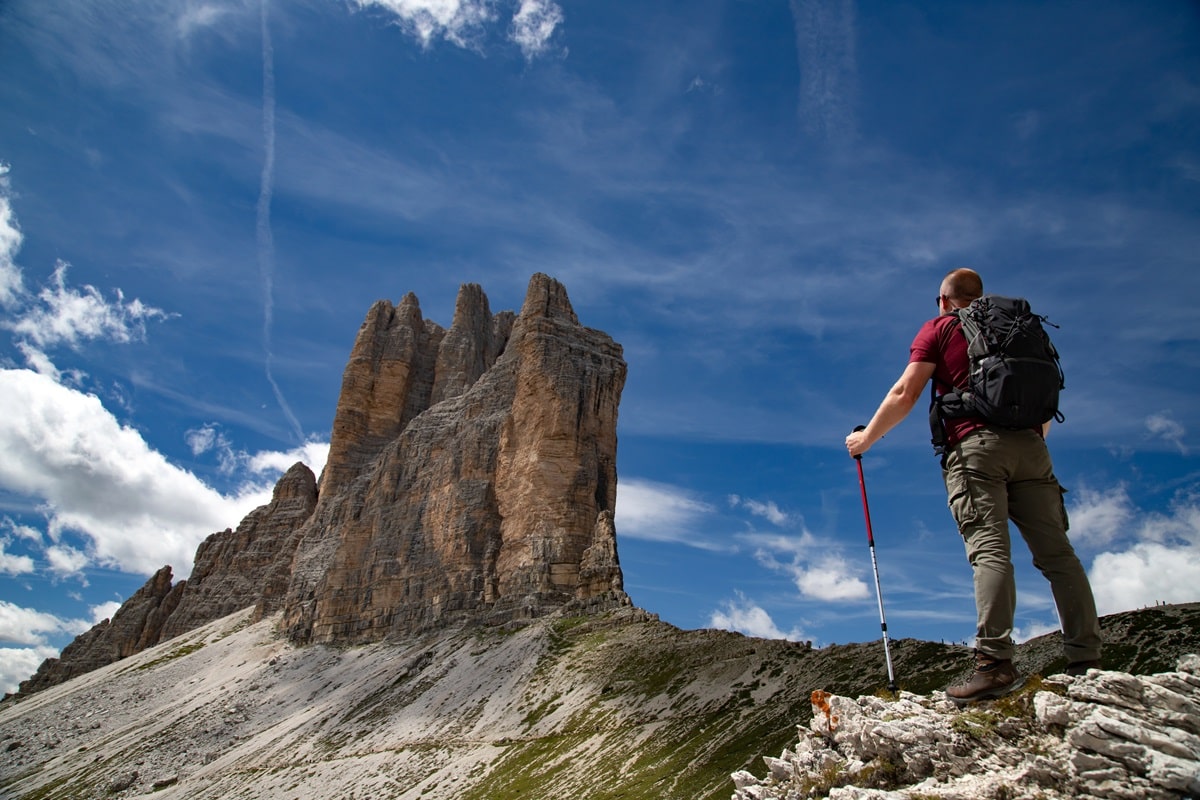Why is Choosing the Right Footwear Crucial for Hiking in the Alps During Summer?
Selecting the appropriate footwear for summer hiking in the European Alps is essential for ensuring comfort, safety, and overall enjoyment. The right shoes or boots can help prevent blisters, reduce fatigue, and provide the necessary support and protection for navigating the varied terrain of the Alps. Proper footwear can also enhance your hiking experience by allowing you to focus on the stunning scenery and the adventure at hand, rather than on discomfort or foot pain.
What are the Unique Challenges of Summer Hiking in the Alps That Affect Footwear Choice?
Summer hiking in the Alps presents several unique challenges that influence footwear selection. The terrain is diverse, ranging from rocky paths and grassy slopes to occasional snow patches. Weather conditions can also be unpredictable, with sudden rainstorms and temperature variations. These factors necessitate footwear that offers excellent traction, stability, and weather resistance. Additionally, the long distances and elevation changes typical of Alpine hikes require shoes that are both lightweight and durable.
How Can the Right Footwear Enhance the Hiking Experience in the Alpine Summer?
The right footwear can significantly enhance your hiking experience in the Alps by providing the necessary support and comfort for long days on the trail. Breathable materials help manage sweat and prevent overheating, while good traction ensures stability on uneven surfaces. Proper ankle support can prevent injuries on technical trails, and lightweight construction reduces fatigue, allowing you to hike longer and enjoy the breathtaking Alpine scenery.
In What Ways Does Summer Hiking in the Alps Differ from Other Seasons?
Summer hiking in the Alps differs from other seasons primarily in terms of weather conditions and trail accessibility. In summer, trails are generally free of snow, making them more accessible and allowing for a wider range of hiking options. However, summer also brings warmer temperatures, which necessitate breathable footwear to prevent overheating. Afternoon thunderstorms are common, so water-resistant or quick-drying shoes are beneficial. Unlike winter, when heavy, insulated boots are necessary, summer hiking calls for lighter, more breathable footwear that still offers adequate support and protection.
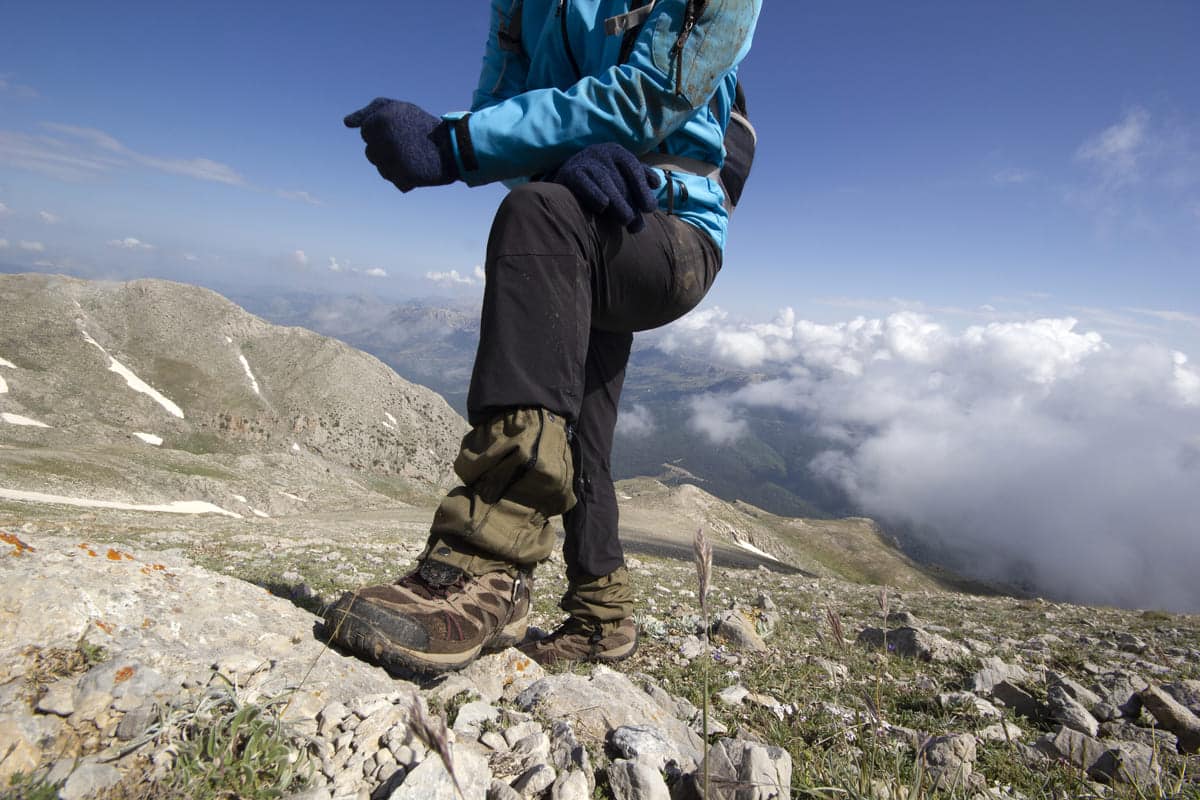
Understanding Footwear Types for Alpine Terrain
Key Differences Between Hiking Boots, Trail Running Shoes, and Approach Shoes
When preparing for summer hiking in the European Alps, selecting the right footwear is essential. Hiking boots, trail running shoes, and approach shoes each offer distinct advantages tailored to different hiking needs.
- Hiking Boots: These are designed for stability and support on uneven terrain. They come in various weights, from lightweight to heavyweight, and offer high-cut or mid-cut options for ankle support. Hiking boots are ideal for multi-day hikes and carrying heavy loads.
- Trail Running Shoes: Lightweight and flexible, trail running shoes are perfect for those who prioritise speed and comfort on well-maintained trails. They provide excellent breathability and are suitable for three-season hiking, making them a popular choice for summer hikes.
- Approach Shoes: These shoes combine the features of hiking boots and climbing shoes. They have stiff soles for rugged terrain and climbing traits, making them ideal for mixed terrain that includes rocky scrambles or climbs.
Influence of Alpine Terrain on Footwear Choice
The European Alps present a variety of terrains, from rocky paths and grassy slopes to occasional snow patches. This diversity influences the choice of footwear significantly.
- Rocky Paths: For rocky and uneven paths, footwear with good traction and stability, such as hiking boots or approach shoes, is essential to prevent slips and provide support.
- Grassy Slopes: On grassy slopes, trail running shoes can offer the flexibility and comfort needed for longer distances without the added weight of traditional hiking boots.
- Snow Patches: Even in summer, snow patches can be encountered at higher altitudes. Waterproof or water-resistant footwear with good insulation is beneficial in these conditions.
Preference for Lightweight Options
Many hikers prefer lightweight options like trail running shoes for summer hikes in the Alps. The reduced weight minimises fatigue, allowing for longer distances and faster pace. Additionally, the breathability of trail running shoes helps manage sweat and keeps feet cool, which is crucial in warmer weather.
Role of Waterproofing in Summer Hiking Footwear
Waterproofing is a key consideration for summer hiking footwear in the Alps. While waterproof shoes can protect against sudden rainstorms and wet conditions, they may reduce breathability, leading to sweaty feet.
- Water-Resistant Hybrids: These combine the features of hiking shoes and boots, offering a balance between breathability and protection against moisture. They are suitable for summer conditions where occasional wet weather is expected.
- Breathable Options: For predominantly dry conditions, breathable shoes that dry quickly and prevent blisters are preferable. Shoes with Gore-Tex or similar membranes can offer a good compromise, providing some water resistance while maintaining breathability.
Choosing the right footwear for summer hiking in the European Alps involves considering the specific terrain, weather conditions, and personal preferences for weight and breathability. Whether opting for the stability of hiking boots, the flexibility of trail running shoes, or the versatility of approach shoes, the right choice can significantly enhance your hiking experience.
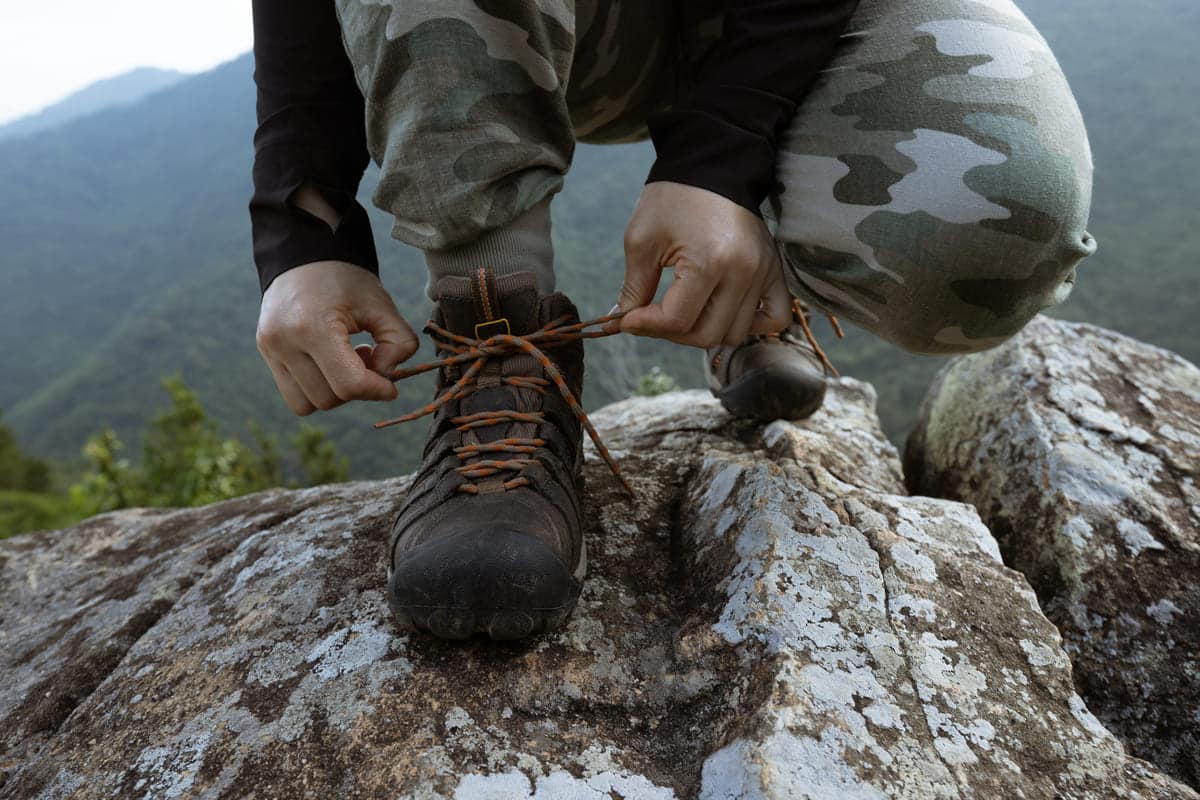
Features to Look for in Summer Hiking Footwear
Importance of Breathability
When hiking in the European Alps during summer, breathability in your footwear is paramount. The warm weather can cause your feet to sweat, leading to discomfort and blisters. Shoes with breathable materials, such as mesh or lightweight synthetic fabrics, allow air to circulate, keeping your feet cool and dry. This is particularly important for long hikes where maintaining foot health is crucial.
Sole and Traction for Varied Alpine Terrain
The varied terrain of the Alps demands footwear with excellent traction and stability. Soles made from materials like Vibram or Contagrip provide the necessary grip on rocky paths, grassy slopes, and occasional snow patches. The depth and pattern of the lugs on the sole are also important, as they help maintain stability and prevent slips on uneven surfaces.
Ankle Support for Technical Trails
Ankle support is a critical feature when selecting footwear for hiking in the Alps. High-cut or mid-cut boots offer additional support, reducing the risk of ankle injuries on technical trails. This support is especially beneficial when carrying a heavy backpack or navigating steep, uneven terrain. However, some experienced hikers may prefer low-cut shoes for greater flexibility and lighter weight, depending on the trail’s difficulty and their personal preference.
Balancing Durability and Lightweight Design
Finding the right balance between durability and lightweight design is essential for summer hiking footwear. Durable materials, such as leather or high-quality synthetics, ensure that your shoes can withstand the rugged conditions of the Alps. However, overly heavy footwear can lead to fatigue. Lightweight options, like trail running shoes or hybrid models, provide the necessary support and protection without the added weight, making them ideal for long-distance hikes.
In summary, when choosing summer hiking footwear for the European Alps, prioritise breathability, traction, ankle support, and a balance between durability and lightweight design. These features will enhance your hiking experience, ensuring comfort and safety on the trails.
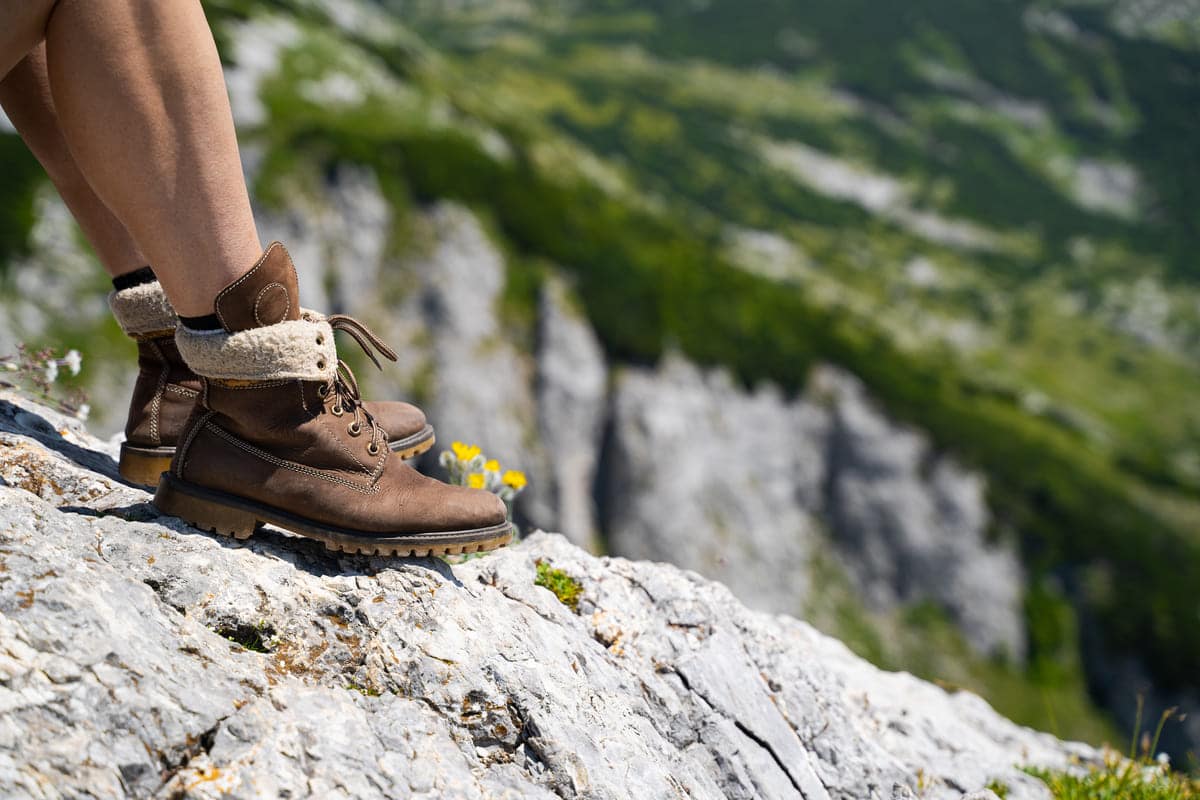
Top Recommended Footwear for Summer Hiking in the Alps
Brands and Models Suited for Alpine Summer Hikes
When it comes to summer hiking in the European Alps, certain brands and models stand out for their performance and reliability. These footwear options are designed to handle the unique challenges of Alpine terrain, providing comfort, support, and durability.
- Merrell Moab 3: Known for its supportive and breathable design, the Merrell Moab 3 features Vibram traction, making it ideal for varied terrain.
- Salomon X Ultra 4 GTX: This lightweight and supportive model offers excellent traction, perfect for those who need stability on rocky paths.
- La Sportiva Spire GTX: With high traction and stability, the La Sportiva Spire GTX is both breathable and waterproof, suitable for unpredictable Alpine weather.
- Keen Targhee IV Waterproof: Durable and equipped with good tread, this model is great for daily use and rough terrain.
- Hoka Anacapa 2 Mid GTX: Comfortable and stable, the Hoka Anacapa 2 Mid GTX uses eco-friendly materials, making it a popular choice for long hikes.
Addressing the Challenges of Hiking in the Alps
Each of these models addresses the specific challenges of hiking in the Alps:
- Traction and Stability: Vibram and Contagrip soles provide the necessary grip on rocky and uneven surfaces, ensuring stability and reducing the risk of slips.
- Breathability and Waterproofing: Models like the La Sportiva Spire GTX and Salomon X Ultra 4 GTX offer a balance of breathability and waterproofing, keeping feet dry without overheating.
- Support and Comfort: High-cut and mid-cut options, such as the Keen Targhee IV Waterproof, provide ankle support, while lightweight models like the Hoka Anacapa 2 Mid GTX minimise fatigue on long hikes.
User Feedback on Recommended Models
Users typically praise these models for their comfort, durability, and performance on Alpine trails. The Merrell Moab 3 is often highlighted for its immediate comfort and minimal break-in period. The Salomon X Ultra 4 GTX receives positive feedback for its lightweight design and excellent traction. Hikers appreciate the La Sportiva Spire GTX for its breathability and stability, making it a reliable choice for varied conditions.
Catering to Different Types of Hikers
These footwear options cater to a range of hikers:
- Casual Hikers: The Keen Targhee IV Waterproof and Merrell Moab 3 are suitable for those who enjoy day hikes and need durable, comfortable footwear.
- Long-Distance Trekkers: For multi-day hikes, the Hoka Anacapa 2 Mid GTX and La Sportiva Spire GTX offer the necessary support and comfort for extended wear.
- Technical Terrain Enthusiasts: Hikers tackling more challenging trails will benefit from the stability and traction of the Salomon X Ultra 4 GTX and La Sportiva Spire GTX.
By considering these top recommended models, you can find the right footwear to enhance your summer hiking experience in the European Alps, ensuring comfort, support, and durability on the trails.
Sizing and Fit: Ensuring Comfort on the Trail
Importance of Getting the Right Fit
Choosing the right fit for your hiking footwear is crucial to avoid blisters and discomfort. Ill-fitting shoes can lead to painful blisters, hotspots, and even long-term foot issues. Ensuring a proper fit means your feet will be well-supported, reducing the risk of injury and enhancing your overall hiking experience.
Tips for Finding the Perfect Size
When shopping for hiking footwear, consider these tips to find the perfect size:
- Try on Shoes in the Afternoon: Feet tend to swell throughout the day, so trying on shoes in the afternoon gives a more accurate fit.
- Wear Hiking Socks: Always try on footwear with the socks you plan to wear while hiking. This ensures the fit accounts for the extra thickness.
- Check for Toe Room: Ensure there is enough space to wiggle your toes. A thumb’s width between your longest toe and the end of the shoe is a good rule of thumb.
- Heel Fit: Your heel should fit snugly without slipping. Heel slippage can cause blisters on long hikes.
- Walk Around: Spend time walking around the store to test the fit. Pay attention to any pressure points or discomfort.
Fit Preferences for Summer Hiking
Fit preferences can change for summer hiking compared to other seasons. In warmer weather, feet are more likely to swell, so a slightly looser fit may be more comfortable. Breathable materials and a bit of extra room can help manage sweat and prevent blisters. However, ensure the fit is not too loose, as this can lead to instability on uneven terrain.
Common Mistakes to Avoid
Avoid these common mistakes when selecting the size of your hiking footwear:
- Ignoring Break-In Period: New shoes often require a break-in period. Don’t embark on a long hike with brand-new shoes; wear them on shorter walks first.
- Overlooking Width: Footwear that is too narrow or too wide can cause discomfort. Ensure the width is appropriate for your foot shape.
- Assuming Size Consistency: Sizes can vary between brands and models. Always try on each pair, even if you think you know your size.
- Skipping Socks: Trying on shoes without the right socks can lead to an inaccurate fit. Always use the socks you plan to hike in.
By paying attention to these details, you can ensure a comfortable and enjoyable hiking experience in the European Alps. Properly fitting footwear is key to preventing blisters and discomfort, allowing you to focus on the stunning scenery and the joy of the hike.
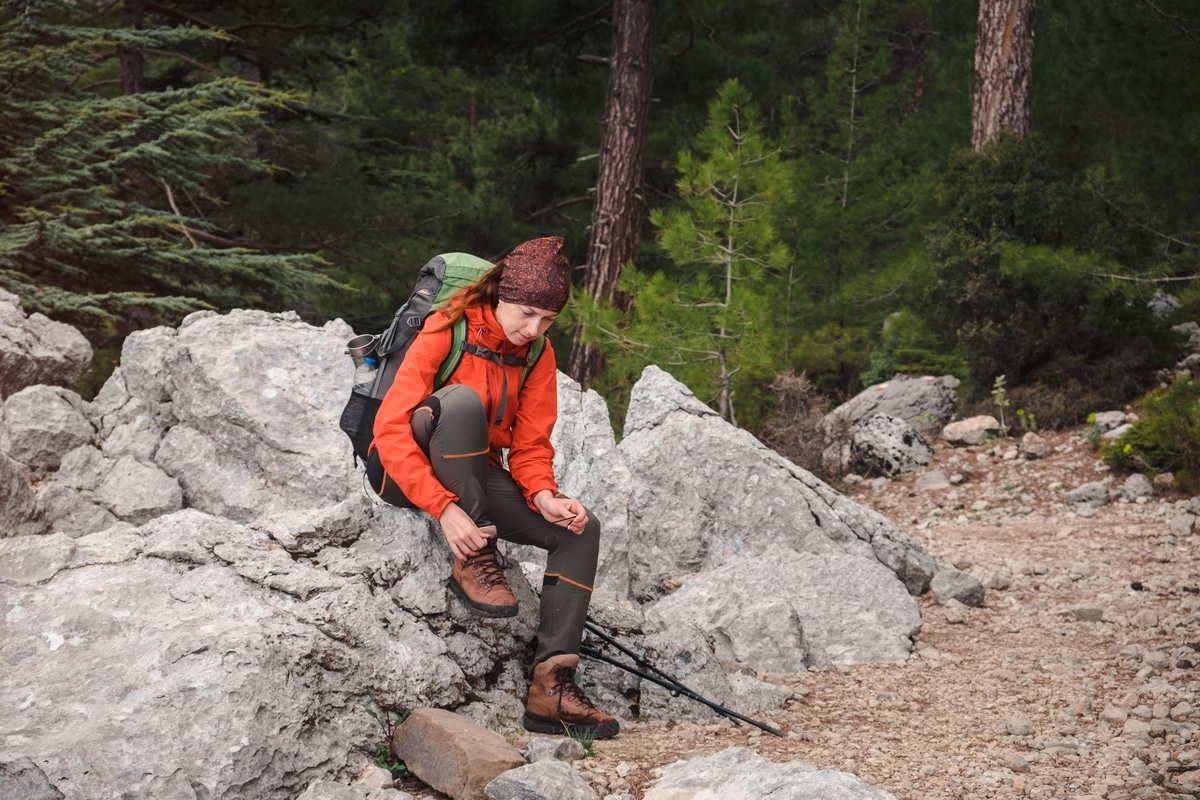
Breaking In and Caring for Your Hiking Footwear
Steps to Break In New Hiking Boots or Shoes
Breaking in new hiking footwear is essential to ensure comfort and prevent blisters. Here are some steps to follow:
- Wear Them Around the House: Start by wearing your new boots or shoes indoors. This helps your feet get used to the fit without the pressure of a long hike.
- Short Walks: Gradually increase the time you spend in your new footwear by taking short walks. This allows the materials to soften and mould to your feet.
- Increase Distance: Once you feel comfortable, start wearing them on longer walks. Pay attention to any pressure points and adjust the lacing if necessary.
- Use Hiking Socks: Always wear the socks you plan to use on your hikes. This ensures the fit is accurate and helps prevent blisters.
Extending the Life of Hiking Footwear
Proper care can significantly extend the life of your hiking footwear. Here are some tips:
- Clean Regularly: After each hike, remove dirt and debris from your boots or shoes. Use a brush and mild soap if necessary.
- Dry Properly: Avoid drying your footwear near direct heat sources. Instead, stuff them with newspaper to absorb moisture and let them air dry.
- Condition Leather: If your boots are made of leather, use a conditioner to keep the material supple and prevent cracking.
- Store Correctly: Store your footwear in a cool, dry place. Avoid leaving them in damp or hot environments, which can damage the materials.
Best Practices for Cleaning and Maintaining Hiking Boots
Maintaining your hiking boots involves regular cleaning and care. Follow these best practices:
- Remove Insoles and Laces: Take out the insoles and laces before cleaning. This allows you to clean all parts of the boot thoroughly.
- Use Appropriate Cleaners: Use cleaners specifically designed for hiking footwear. Avoid harsh chemicals that can damage the materials.
- Rinse and Brush: Rinse off mud and dirt with water, then use a brush to scrub away any remaining debris.
- Reapply Waterproofing: After cleaning, reapply a waterproofing treatment to maintain the boots’ water resistance.
Dealing with Common Wear and Tear Issues
Hiking in the Alps can lead to specific wear and tear issues. Here’s how to address them:
- Sole Separation: If the sole starts to separate, use a strong adhesive designed for footwear to reattach it.
- Worn Treads: When the treads wear down, consider resoling the boots if they are high-quality and worth the investment.
- Frayed Laces: Replace frayed laces with new ones to ensure a secure fit.
- Scuffed Leather: Use a leather conditioner to minimise scuffs and keep the leather looking good.
By following these steps and best practices, you can ensure your hiking footwear remains in top condition, providing comfort and support for your adventures in the European Alps. Properly broken-in and well-maintained boots or shoes will enhance your hiking experience, allowing you to focus on the stunning scenery and the joy of the trail.
Accessorising Your Footwear for Optimal Performance
Types of Socks for Summer Hiking
Choosing the right socks is just as important as selecting the right footwear. For summer hiking in the European Alps, consider socks made from moisture-wicking materials like merino wool or synthetic blends. These materials help keep your feet dry and comfortable by drawing sweat away from the skin. Look for socks with cushioning in key areas, such as the heel and ball of the foot, to provide extra comfort and reduce the risk of blisters.
Enhancing Comfort with Insoles and Orthotics
Insoles and orthotics can significantly enhance the comfort and support of your hiking footwear. Custom or high-quality insoles provide better arch support, which can help prevent foot fatigue on long hikes. They also offer additional cushioning, which can absorb shock and reduce the impact on your joints. If you have specific foot issues, such as flat feet or plantar fasciitis, orthotics can provide the necessary support to alleviate discomfort.
Additional Accessories to Improve Functionality
Several accessories can improve the functionality of your hiking footwear:
- Laces: Consider replacing standard laces with locking laces to ensure a secure fit and prevent them from coming undone during your hike.
- Heel Cups: These can provide additional cushioning and support, particularly useful for those with heel pain.
- Toe Caps: Protect your toes from impact and abrasion, especially on rocky terrain.
Benefits of Gaiters in the Alpine Summer
Gaiters are a valuable accessory for summer hiking in the Alps. They wrap around your lower legs and the tops of your boots, providing a barrier against debris, mud, and water. This is particularly useful when hiking through snow patches or crossing streams. Gaiters also help keep your feet dry and clean, enhancing overall comfort and reducing the risk of blisters.
By carefully selecting the right socks, insoles, and additional accessories, you can optimise the performance of your hiking footwear. These enhancements will ensure a more comfortable and enjoyable hiking experience in the European Alps, allowing you to focus on the stunning scenery and the adventure ahead.
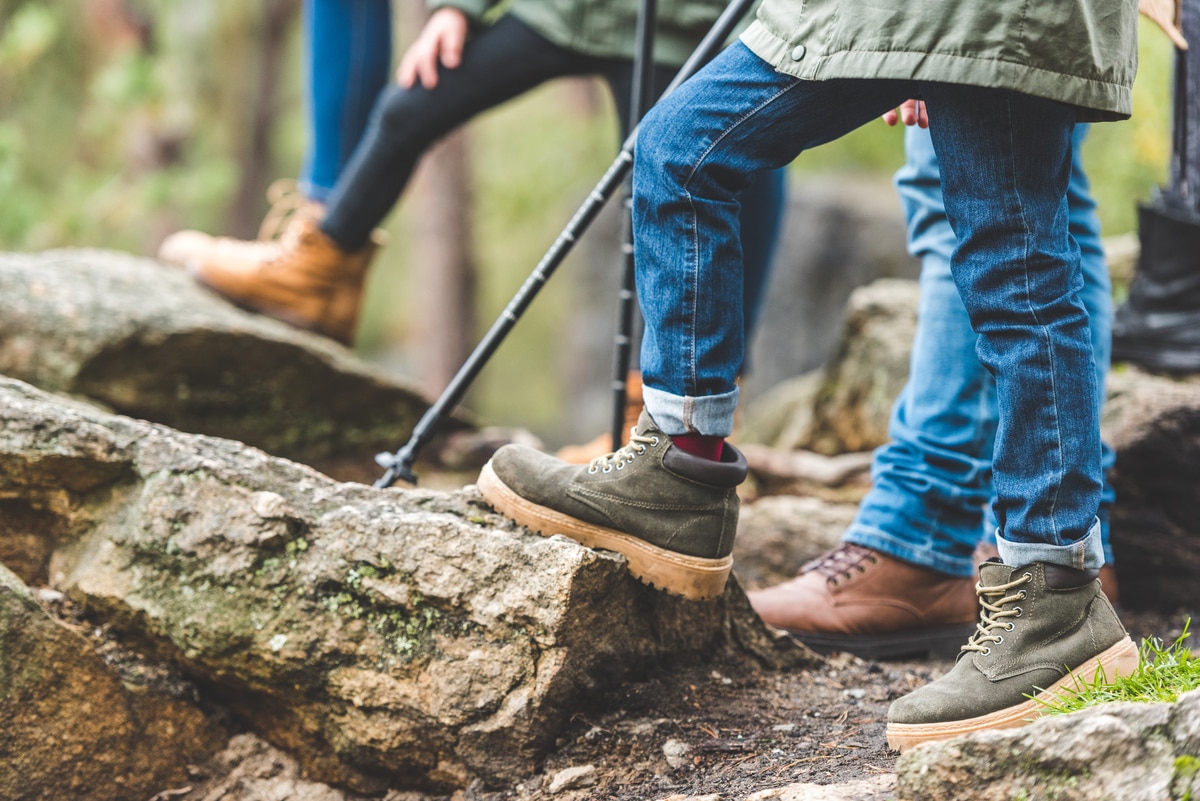
Final Thoughts on Choosing the Best Footwear for Alpine Summer Hikes
Balancing Personal Preferences with Technical Requirements
When selecting footwear for summer hiking in the European Alps, it’s essential to balance personal preferences with the technical demands of the trails. Consider the type of terrain you’ll encounter, the weather conditions, and the duration of your hikes. While some may prefer the stability of high-cut hiking boots, others might opt for the lightweight flexibility of trail running shoes. The key is to find footwear that meets your comfort needs while providing the necessary support and protection for Alpine conditions.
Key Takeaways for Selecting the Right Footwear
Choosing the right footwear involves several critical considerations:
- Breathability: Opt for shoes with breathable materials to keep your feet cool and dry.
- Traction: Ensure the soles provide excellent grip on varied terrain, such as rocky paths and grassy slopes.
- Ankle Support: Decide between high-cut, mid-cut, or low-cut options based on your need for ankle stability.
- Weight: Lightweight footwear can reduce fatigue on long hikes, but ensure they still offer adequate support.
- Durability: Select materials that can withstand the rugged conditions of the Alps, such as leather or high-quality synthetics.
Staying Informed About New Footwear Technologies and Models
To stay updated on the latest advancements in hiking footwear, consider the following:
- Manufacturer Websites: Regularly check the websites of leading footwear brands for new releases and technology updates.
- Outdoor Gear Reviews: Follow reputable outdoor gear review sites and magazines for expert opinions and user feedback.
- Hiking Forums and Communities: Join online hiking communities where members share their experiences and recommendations on the latest footwear models.
Final Advice for a Successful and Enjoyable Hiking Experience
To ensure a successful and enjoyable hiking experience in the Alps, keep these final tips in mind:
- Break In Your Footwear: Allow time to break in new boots or shoes before embarking on long hikes to prevent blisters and discomfort.
- Proper Fit: Ensure your footwear fits well, with enough room for your toes and a snug heel to avoid slippage.
- Footwear Care: Regularly clean and maintain your footwear to extend its lifespan and performance.
- Accessorise Wisely: Use appropriate socks, insoles, and gaiters to enhance comfort and protection on the trails.
By carefully considering these factors, you can select the best footwear for your summer hiking adventures in the European Alps, ensuring comfort, support, and durability on the trails.
